Information about Earth Centre
|
Earth Centre is now closed.
Earth Centre closed in October 2004. Earth Centre is now in administration and
is no longer open to the public.
If you need any information about Earth Centre, please use the
Guest Book and make a private posting. Please do not contact Town Field Primary
School. Thank you! On this page is some information we were sent
prior to our school visits
Earth Centre Attractions
Solar Point
Visitors begin and end their journey through Earth Centre in Solar
Point. The plaza is named in celebration of the sun, the source of all
energy for life on earth. The Solar Pod, designed by Solar Century, is a
demonstration of solar power. The sides of the Pod are covered with a
sturdy and colourful material made of recycled plastic bags. In Phase 2,
due to open in April 2000, a six metre high canopy of solar
photovoltaics will give cover to this area. The canopy will provide
Earth Centre with a proportion of its electricity requirements.
From Solar Point the visitor can see, just beyond the gates, a double
spiral of crushed local limestone and coal spoil. The limestone provides
a link with twelfth century Conisbrough Castle, visible in the near
distance, and other buildings in Earth Centre. The coal spoil is a
reminder that the visitor is standing on the regenerated site of two
coalmines, Denaby Main Colliery, which closed in 1968, and Cadeby
Colliery which closed in 1986 after a bitter strike, and a memorial to
the miners who worked here.
The material used underfoot on the plaza is local, hardwearing York
stone. The wide paths leading away from the area are covered in Bredon
gravel from Derbyshire. On either side of Solar Point are eat.organic@earthcentre
and Planet Earth Galleries.
eat.organic@earthcentre
The restaurant serves food grown locally and organically as far as
possible and fair-traded food. It's healthy food that sustains the
customer and the planet without ill effect.
The restaurant building is light and airy in design. It has a natural
form of "air conditioning" that does not depend on refrigerants, but
uses the height of the building and the windows at roof level to keep
the interior cool. A cladding of green oak shades the windows from
direct sunlight. In winter an underground heating system keeps the
building warm. The architects, Feilden Clegg, designed the restaurant as
a contrast to Planet Earth Galleries across the plaza, another Feilden
Clegg design.
Planet Earth Galleries
These immense galleries, a Feilden Clegg design, are built into the
hillside at the foot of a limestone escarpment. The façade is local
magnesian limestone, quarried at Cadeby, the same stone that was used to
build Conisbrough Castle. The whole of the Earth Centre site and the
surrounding area can be viewed from the roof of the Galleries.
The galleries are the largest underground (or cut-and-cover) building a
visitor is likely to experience. An interesting feature, which the
visitor does not see, is the labyrinth underneath the galleries. The
labyrinth combines the idea of the Roman hypocaust with contemporary
environmental modelling techniques. It acts as an effective temperature
regulator, keeping temperatures comfortable in summer and winter. Two
photographic representations of the labyrinth were made by Helen Sear
for Photo 98 and hang in the Entrance Gallery to the building.
Planet Earth Galleries house two major exhibitions, Planet Earth
Experience and Action for the Future.
Planet Earth Experience
The Planet Earth Experience takes place in an immense, dark gallery
space. It conveys a simple message: the world is a wonderful place full
of beauty and life, but something is wrong. The way we live on earth is
rapidly destroying the natural systems upon which we depend. Through
this Experience visitors can explore the ever-changing balance between
people, nature and technology.
Planet Earth Experience is the world's first "cyberhenge". Henges of
standing glass hold sculptures representing life on earth, figures that
survive everything that happens in the room. Giant, cracked, glowing
globes symbolise threats to the earth.
In this unsettling, unpredictable world, theatrical visions unfold with
the use of lights, projections and prisms. Music and sound are part of
the experience. An installation of Solar Spectrum Art bathes the visitor
in intense rainbow colours. It is a powerful, optimistic experience to
symbolise the possibility of a fantastic future - a sustainable future -
in the new Millennium.
Designed by an inspiring team of international artists working under the
name 30/70, Planet Earth offers a compelling theatrical experience in
which the visitor becomes a player in the great global challenge of a
sustainable future
Action for the Future
A dramatic contrast to the dark space of the Planet Earth Experience,
Action for the Future is a light, bright, optimistic space. It completes
the story within the Planet Earth Galleries with a multitude of ideas
and visions for a sustainable future. In the centre of the room is a
huge table model that tells the story of Earth Centre and the
surrounding area.
There are many inspirational examples of sustainable practices that
people are putting into action around the world, making sustainability a
part of their lives. In this gallery sustainability is divided into
sixteen categories, each with an animated installation or "icon" to
represent it. When visitors explore the rest of the site they will
encounter these sixteen themes in a variety of combinations in
everything they see.
‘Magic’ windows invite the visitor to see a “fantastic future” at home,
in a city, country and planet-wide as visions of regeneration and
sustainable futures are revealed.
The exhibition, designed by OPERA, a company based in Amsterdam, is
intended to prepare visitors for the remainder of the site and to prompt
them to think about sustainable actions they could take at home.
Devil's Ings
Across the McColgan Bridge from Solar Point lie the Devil's Ings, the
wetlands of the Earth Centre site, situated between the path and the
River Don.
The lagoon catches the run-off water from the site and this is also
where the cleaned water from the wastewater treatment system ends. From
here water can be taken for storage on site and used to irrigate the
gardens in dry conditions. Further along the riverbank are the biomass
gardens, where fast growing trees like willow and red oak are planted.
The wood from these may be gathered and chipped for use as fuel in the
biomass burner in Planet Earth Galleries, possibly in Phase 2.
Nature Works
Nature Works explores the aquatic and other habitats of the Earth Centre
site, encouraging hands-on and exploratory play and education. Specially
constructed podiums exhibit the different habitats, children "pond-dip"
from indoor tanks to collect algae, bugs and fish in jam jars, and
visitors are able to view some of the mini beasts magnified through a
microscope onto large overhead screens.
The building is a simple timber and glass structure, designed by Letts
Wheeler, standing between the Cadeby stream and one of the wildlife
ponds. It has a steel frame with a cladding of indigenous softwood, and
the roof is made of slabs of reconstituted timber waste. Nature Works is
a "coats-on" experience; there is no heating in the building.
Nature Works was conceived, and designed in part, by local children,
naturalists and community groups. It serves as a focus for events,
demonstrations and guided tours to show the freshwater and terrestrial
habitats and the biological diversity in and around Earth Centre’s 400
acre Ecology Park.
Kaki Peace Tree
This special tree from Japan represents part of the Revive Time Kaki
Tree Project lead by world-class artist Tatsuo Miyajima.
The tree carries enormous symbolic significance of regeneration, hope
and peace. When the nuclear bomb was dropped on Nagasaki in 1945, five
trees survived the devastation. In 1993, almost fifty years later, Dr.
Ebinuma, a tree doctor living in Nagasaki, diagnosed and cured one of
the burnt Kaki trees and succeeded in growing a sapling. He started to
hand these saplings over to children for them to grow as symbols of
regeneration. The Earth Centre tree is one of the saplings grown in this
way, and was ceremonially planted on a snow covered site on March 6th
1999, in the presence of Dr. Ebinuma and Tatsuo Miyajima.
Although fifty-three and a half years had passed since the destruction
of Nagasaki, the sapling's level of radiation had to be tested before it
could be considered safe to be planted at Earth Centre.
Wilderness Adventure
From the top of the Play Mount children can align themselves with the
ley line that runs under Earth Centre between Conisbrough Castle and the
Volcano (not a real one!) before sliding down the tube to the bottom.
The play equipment has been designed by Hags, a company well known for
its safe and innovative designs. Toddlers have their own play area with
safe equipment and soft white sand in which to play.
Part of Wilderness Adventure is the Wilderness Theatre, covered by a
huge gridshell of green oak and fronted by an area of lush grass upon
which the audience can sit - or stand, or turn cartwheels!
Running the length of Wilderness Adventure is the Rokkaku Trail.
Rokkaku Trail
This Japanese sensory trail was designed by Kijo Rokkaku, and is the
only one outside Japan. It encourages visitors to use their senses of
touch, smell and hearing. An underfoot path of different textures
massages bare feet in the same way as a reflexologist might. Giant
trumpets enhance sounds to allow visitors to hear the noises around them
in a different way. Earth Centre's own special perfumes fill strange
hooded shapes into which visitors can put their heads.
The heightened use of the senses can allow visitors to experience the
world around them in whole new way.
Earth Arena
This is Earth Centre's theatre in the round; an open air circular space
with a central area for events surrounded by two semi-circles of tiered
wooden seats. The Arena was designed by Alsop and Stormer, the
architects of the Water Works building. As a venue it lends itself to
performances of all kinds from plays to musical events to quizzes.
Forest Gardens
Earth Centre landscape was designed by landscape architects Grant
Associates. The company's objectives were to create a beautiful and
inspiring landscape that is truly sustainable and educational.
Forest Gardens replicate forest conditions with plantings of native
woodland species. A canopy of trees gives cover to shrubbery, which in
turn gives cover to ground plants. Gridshells made of green oak covered
with climbing plants take the place of the tree canopy until that has
grown. The herbaceous plants are herbs for medicinal as well as culinary
use and edible plants. Paths of crushed red brick twist and turn to lead
the visitor through the gardens.
Bog Gardens
Several small bog gardens line the route from Water Works down to the
River Don. Visitors can find ideas for planting their garden ponds or
other wet areas in their gardens. Trees, shrubs and ground plants
suitable for the conditions are used, from the Swamp Cypress to the
Stinking Iris.
In between the bog gardens runs the Bio-Fence, a "bio-reactor" capable
of producing algae in prolific quantities. It's bright, almost glowing,
green colour comes from the pigment chlorophyll in the algae. The Fence
is part of Earth Centre's waste water treatment. Partially cleaned water
enters the Bio-Fence from the Living Machine in Waterworks, and the
algae in the fence feed on the waste matter. The cleaned water ends in
the lagoon from where it is pumped to the main holding tank on site and
used to irrigate the gardens in dry weather conditions. The Bio-Fence
also has an end product - the algae is drawn off for use as fertilizer
on the gardens.
Water Works
The Water Works building, designed by architects Alsop and Stormer, is a
simple, modern building, the design of which is dictated by its
function.
The main area of the building houses the Living Machine, part of the
waste-water treatment on site. The Living Machine is a combination of
simple technology and the complex ecology of plants and micro-organisms.
Bacteria on the roots of green-house plants growing in the large tanks
of the Living Machine cleanse the waste water. The building has a triple
skin of Osteflon, a material more environmentally friendly in its
production than PVC, and lighter in weight than glass. The high level of
transparency allows the plants to receive the UV radiation they require
for healthy growth, and the triple layering provides insulation.
The entrance area to the Water Works building holds an exhibition on the
issues of water and sustainable development and an illustration of the
development of the combination of technology and ecology seen in the
Living Machine. This part of the building has a cladding of indigenous
Douglas Fir on a wooden framework.
21st Century Terraced Gardens
These gardens face south to make the most of the sun. The white of the
limestone clad walls of the terraces reflects the warmth of the sun onto
the soil.
The gardens are on three levels, showcasing local, national and global
organic gardening techniques and produce. Each level has soils ranging
from alkaline, which represents the limestone to the east of the
gardens, to acid, which is the coal spoil to the west.
Grassed orchards top the terraces and it is hoped that the fruit and
vegetables from the orchards and gardens will provision the restaurant,
eat.organic@earthcentre.
Dry Gardens
Earth Centre is built on the site of two former collieries and their
hills of coal spoil. Very little will grow on acid coal spoil so soil
had to be created for all our gardens. Soil was built up using various
combinations of sewage sludge, green waste, farm manure, waste from
mushroom farming and topsoil brought from local land that was being
developed for building.
The south facing Dry Gardens are planted with drought tolerant species
of trees, shrubs and plants from all over the world. Rainfall is
captured in the soil but the gardens are not artificially irrigated.
Stones cover the soil acting as a mulch, keeping the moisture in the
soil and preventing weeds from growing. The trees in the grove at the
foot of the garden are Eucalyptus trees.
A Hornbeam is planted at the heart of Earth Centre at the top of the Dry
Gardens. Both the landscape architect and a ley-line expert separately
selected this place as the heart of the site.
The Willow Story
The willow is the most versatile of trees.
At Earth Centre we have taken advantage of the willow's ability to grow
from cut branches put into the ground and its flexibility to make
fences, tunnels and archways. These create beautiful sculptured forms
that just a few weeks after their construction in April 1999 were
bursting into leaf. Willow has also been used to make the "baskets" that
form the peepholes in the living willow.
Willows particularly like to grow near water and the Cadeby Stream,
which runs under the McColgan Bridge, is overhung with them. They make
excellent biomass in Devil's Ings, the Wetlands, because they grow so
quickly and produce wood that can be cut every three years without doing
any damage to the plant. They provide a wonderful habitat for insects,
particularly butterflies.
In our Ecology Park willow is used to help decontaminate the soil; it is
excellent at absorbing heavy metals.
Earth Shop
On Solar Point, inside the Planet Earth building, is a shop with a
difference. The products for sale are locally produced, organically
produced and fair-traded as far as possible. The shop is also an outlet
for goods from Oxfam, The Body Shop, Neal's Yard and Dorling Kindersley.
Inside the shop are Action Stations. Here you can find out about how to
become an Earth Companion or an Earth Family, find out more about Earth
Centre, find out which organisations are the best ones to contact about
a variety of subjects and tell our staff about your own ideas for taking
action for the future.
|
| Here is a guide which we were sent before our visit and we found it
very useful. We used it when we took our classes around the Earth
Centre. |
Earth Centre welcomes you
Welcome Building
The light and hospitable Welcome Building is in the form of a beautiful
wave surging towards Solar Point. It creates areas where people can
linger as well as space to pass through. Your entrance tickets can be
bought here, you can enjoy a drink and a snack, or buy a gift from the
carefully selected items in the shop.
This new design by architect Bill Dunster is made largely of reclaimed
materials: radiators from local demolition sites, reclaimed timber, old
telegraph poles, even the lights and shelves from Earth Centre’s old
shop. Toxic materials were not used for building or decorating; there is
no PVC present and paints and preservatives are water based or organic.
Bridges
From the main bridge over the River Don you can see Conisbrough Castle
on the skyline slightly behind you to the right. The limestone used to
build the castle over 800 years ago is the same as the local stone used
in the Terraced Gardens and Planet Earth Galleries. The narrow metal
bridge on the left was used by the miners when the collieries were here.
It took them two minutes to cross it before a shift but eight hours to
complete a shift and walk back home over it, so they named it the
Longest Bridge.
Conference Centre
The Conference Centre, also designed by Bill Dunster, is a low-tech, fun
building. It’s made largely from re-cycled materials used in an unusual
way. The Centre is tucked into the hillside for insulation. The sedum
planted roofs on its towers blend into the landscape. It stands on a
gigantic tank of water that is heated by solar power; the water is then
used to provide central heating. Huge cowls on the towers expel stale
air and transfer the warmth from it to the fresh air they draw into the
building. None of the paints and finishes used in the Centre contain
substances detrimental to health.
In all, the Centre can cater for up to 250 people. The spaces inside the
Centre lend themselves to intimacy and interaction, but can also be used
as separate units.
www.zedfactory.com for information about Bill Dunster
www.1.arch.hku.hk for information about sustainable design
4 Education and Activities
Earth Centre offers lifelong learning opportunities focused on
sustainable development and citizenship.
The Education Team develops programmes for schools, colleges,
universities and vocational and recreational groups.
All educational activities at Earth Centre aim:
- to make people aware of their own potential
- to equip people with the skills to work towards a sustainable future
- to provide a pioneering and enjoyable learning experience
- to nurture a sense of fascination with the wider world
New this year are a programme of activities, a study centre equipped
with an IT room and an ecology laboratory, and a hotel to cater for
residential visits.
Activities can be booked independently of Education visits. Young people
aged 7 – 15 can take part in activities during the day, in evening clubs
or at weekends
The activities on offer are climbing, abseiling, rafting, canoeing,
archery, karting, zip wire,
mountain biking, orienteering, fishing, team building and survival
skills.
5, 6, 7 Solar Point
Architect Peter Clegg designed the three contrasting structures, Planet
Earth Galleries, eat.organic@earthcentre and the Solar Canopy, as an
architectural whole standing on a paving of York stone.
Planet Earth Galleries
These enormous Galleries are built into the hillside. The earth covering
helps to insulate the building. Hidden beneath the Galleries is the
Labyrinth, a maze. This modern version of a Roman hypocaust regulates
the temperature inside the building. The aim was to have a building that
used 80% less energy than a conventional building of a similar size. The
Galleries are faced with limestone from the local Cadeby Quarry.
Three new major exhibitions in the Galleries
Restaurant
The restaurant building is light and airy in design with a natural form
of “air conditioning” that uses the height of the building and the
windows at roof level to keep the interior comfortable. A cladding of
slatted green oak provides shade from the sun. In winter comfort is
provided by underfloor heating.
This year the design company Paragon won the “Best Interior Design”
award, sponsored by Bombay Sapphire, for its work on the interior design
of the restaurant. The materials and finishes have been produced in a
way that does not cause harm to the environment or people.
The water for washing dishes is heated by solar panels on the roof of
the building. The used water is then piped to the Living Machine for
cleaning. Pre-consumer waste is separated and recycled or composted for
use on the gardens.
Earth Centre’s chef insists that only the best local and organic produce
is used to prepare the dishes, and that all the food is freshly cooked
on the premises. Vegetables for the restaurant are grown in Earth
Centre’s Terraced Gardens and the ducks and chickens there provide eggs
and meat. The restaurant garden near the Cadeby stream, below the
building, supplies fresh herbs.
Solar Canopy
This is the largest Solar Canopy in the UK, and its performance will be
closely monitored as part of a three year European research project.
The supporting structure was built by Carpenter Oak from European larch
grown in a sustainably managed forest in Scotland. It resembles trees
growing out of the York stone to form a forest canopy overhead, and the
tilted canopy roof throws a dappled light onto the ground.
The roof is made of 250 toughened glass photovoltaic modules designed to
last for 25 years. Photovoltaic (PV) or solar cells are made of a
special semi-conductor material that transforms light into electricity
by the “photovoltaic effect”. This effect was discovered in 1839 by
Antoine Cesar Becquerel. PV cells generate direct current electricity
that is usually converted into alternating current so that it can
operate standard electrical equipment.
In one year the Solar Canopy will generate up to 80,000 kilowatt hours
of electricity. This is sufficient to service 21 typical homes. Planet
Earth Galleries will use most of the electricity generated, but any that
is not used will be transferred to the Yorkshire Electricity grid.
The tilt on the roof is 5%, which is the most that the supporting
structure and the buildings either side of it can accommodate.
www.brookes.ac.uk for the UK Solar Energy Society
www.hitchams.suffolk.sch.uk/roman for information about Roman heating
systems
www.eeba.org for information about energy efficiency
www.fairtradefederation.com for information about fair-traded goods
8 Wilderness Adventure
In Wilderness Adventure children can play safely and use their
imaginations.
Wilderness Play
The attractive play equipment was designed and made by Hags Play from
materials carefully chosen for their low impact on the environment. From
the top of the high play tower children can align themselves with the
ley line that runs beneath Earth Centre between Conisbrough Castle and
the Volcano before sliding down the tube to the bottom. Toddlers have
their own play area with safe equipment and soft white sand.
Sensory Trail
Running the length of Wilderness Adventure is the Sensory Trail. This
sensory trail was designed by Kijo Rokkaku, and is the only one outside
Japan. It encourages a heightened use of the senses of touch, smell and
hearing, allowing you to experience the world around you in a new way. A
path of different textures massages bare feet; giant trumpets enhance
sounds; the scents here may always remind you of your visit.
Yurts
For over a thousand years tents like the yurt and ger on show in
Wilderness Play have been homes for the nomads of Central Asia.
The four bay canvas tent was made in England. It is used as a classroom
yurt and to house a fascinating exhibition on the sustainable and
nomadic lifestyle of the Kyrgyz people.
The felt yurt was made for Earth Centre by a Yurt Master in Kyrgyzstan.
The roof is steeply sloped to protect against the rain and snow in the
high mountain regions where the nomads lived. The felt covers are laid
on a trellis frame usually made of willow. The yurt is light and easy to
put up, to pull down and to carry from place to place. It would have
taken two camels to transport a yurt this size. Inside, the damp wool
smell of the felt is quite distinctive.
The ger differs slightly in design from the yurt in order to give
protection against the different weather conditions of Mongolia. A
survey conducted in 1988 showed that 60% of Mongolian people still
carried on the traditional nomadic lifestyle and lived in gers. The
Mongolian nomads depended on their animals; sheep, especially, provided
their main diet of milk and meat, the hides and wool for their clothing
and felt, bones to make into utensils and toys and dung for fuel.
Nothing was wasted in the nomadic lifestyle.
www.woodlandyurts.freeserve.co.uk for information about Yurt
construction
www.wri.org for information about cultural diversity
www.natfed.org. for information about community development
9 Earth Arena
The design for Earth Arena, by architect Wil Alsop, is based on the idea
and shape of the Greek amphitheatres of ancient times. The concrete
walls and the banks of nettles enclose a circular seating area with a
ground-level “stage” in the middle. The space is used for theatrical
events, and debates and discussions intended to highlight the importance
of free speech and people’s right, within the law, to act in support of
their beliefs.
The lovely wooden seating has an amusing tale to tell, with a salutary
lesson attached. The project directors asked the contractors to ensure
that the wood they used was indigenous, by which they meant native to
the UK. When it was too late to do anything about it they discovered
that wood grown in Canada had been used. When challenged, the
contractors protested that the wood was indigenous – it was indigenous
to Canada!
www.la21-uk.org.uk for Local Agenda 21information
www.amnesty.org.uk for information about political prisoners
www.parliament.uk for information about Parliament
10, 11, NatureWorks
NatureWorks
The NatureWorks building is a simple timber and glass structure,
designed by Letts Wheeler, standing between the Cadeby stream and one of
the wildlife ponds. It has a steel frame with a cladding of indigenous
red cedar, and the roof is made of slabs of reconstituted timber waste.
NatureWorks is a “coats-on” experience; there is no heating in the
building.
The exhibition explores the aquatic and other habitats of Earth Centre,
encouraging hands-on and exploratory play and education. Specially
constructed podiums exhibit the different habitats and a cut away
beehive shows bees busy at work. Children “pond-dip” from indoor tanks
to collect algae, water fleas and fish in jam jars, and can view some of
the minibeasts through the microscopes.
You can explore the Country Park to see at first hand the habitats
represented here.
The ponds outside NatureWorks serve different functions. In the pond
under the building fish are grown for the tanks inside and then put back
again into the pond. The amphibian pond across the willow walkway is
home to frogs and toads and the insects they eat. Ducks and moorhens are
also settling on this pond.
A wheelchair friendly sensory walk meanders around the amphibian pond.
The willow in the vicinity of NatureWorks was planted for its beauty,
its ability to decontaminate the coal spoil underneath and for the
valuable habitat it provides for a variety of wildlife.
www.wildlifegardening.co.uk for information about making your own
wildlife pond
www.detr.gov.uk for information about wildlife and the countryside
12, 13, 14, 15 WaterWorks
Living Machine and Muck to Gold
The WaterWorks building, designed by architect Will Alsop, is a simple,
modern building. It has a steel structure supporting a triple skin of
transparent Osteflon, which is lighter than glass and produced in a more
environmentally friendly way than PVC. The exhibition area of the
building has a cladding of indigenous Douglas Fir on a wooden framework.
The main area houses the Living Machine, part of the waste-water
treatment at Earth Centre. All the waste water from the washbasins and
vacuum toilets travels through a series of underground tanks behind
WaterWorks. Bacteria in these tanks begin to digest the waste before the
water passes to the Living Machine. The Living Machine is a combination
of simple technology and the complex ecology of plants and bacteria.
Large tanks built into the structure of the building hold green-house
plants, which thrive in the light, insulated atmosphere. The bacteria on
the roots of the plants clean the waste water. The water can be released
into the Bio-Fence in the Bog Gardens, Devil’s Ings Wetlands or the
River Don.
The exhibition area houses an amusing peepshow about turning human and
animal waste into energy. The peepshow carries a serious message about
the overuse of resources and the need to develop alternatives. It was
developed by designer Jane Revitt and came to Earth Centre from Expo2000
at Hanover. Surrounding the peepshow is an informative exhibition about
sewage and its treatment, nationally and globally.
Water Cycle Simulator
The only white knuckle ride at Earth Centre!
This simulates the journey of a water droplet around the earth as it
evaporates into the clouds, then falls again as rain, over and over. The
journey is great fun, but the messages are serious ones. The same water
is constantly recycled around the environment. Everyone on Earth shares
the same water. Therefore, the way we use water affects life all over
the world.
The Water Cycle Simulator has been sponsored by Unilever
Water Quality Monitoring Station
The demand for cleaner water is increasing daily in almost every part of
the world. The quality of river water is one of the issues at the centre
of this concern.
One aspect of the Environment Agency’s work is to liaise with local
authorities, industry, agriculture, local action groups and the public
to improve the quality of river water. The Water Quality Monitoring
Station at Earth Centre uses several indicators of water quality. Of
these, two are used by the General Quality Assessment Scheme: dissolved
oxygen and ammonia. A dissolved oxygen count of 80 is very good: 20 is
poor. An ammonia count of 0.25 is very good; higher than 9 is poor.
Biological indicators of heavy pollution are rat-tailed maggots and
sludgeworms. The presence of mayfly nymphs and stonefly nymphs in the
water indicate that it is not polluted.
The quality of the water in the Don is gradually improving. This station
will give an accurate record of the water quality in this part of the
river.
The Water Quality Monitoring Station has been sponsored by the BOC
Foundation and ABB
Bog Gardens and Bio-Fence
All the waste water from Earth Centre runs into these gardens. Earth
Centre’s water story divides neatly into two: the story of the waste
water and the story of the surface water.
The waste water story is about conserving water. Earth Centre aims to
use 75% less water than other visitor attractions of a similar size. The
waste water from the vacuum toilets and washbasins in Earth Centre pass
through underground Tanks behind WaterWorks and the Living Machine where
it is cleaned. From there the water enters the Bio-Fence. The algae in
the Bio-Fence feed on any waste nutrients left in the water. The algae,
which multiply rapidly, are then released into the reed bed. They
provide food for the tiny water fleas, called Daphnia, that are used as
fish food in Devil’s Ings.
The surface water story happens all over Earth Centre. A network of open
channels, underground French drains, rills and basins are linked across
the site. These collect the rainwater that runs off the roads and
buildings and channel it in the direction of Devil’s Ings Wetlands. The
water passes through the Bog Gardens on its way to the Wetlands. The
amount of water always in the Gardens provides the plants with the wet
conditions they need to thrive without additional irrigation.
Devil’s Ings
These new, man-made Wetlands act as a storage area for all the water
from Earth Centre.
The channels formed here are lined with reeds and rushes, intended to
filter and clean the water as it enters the Wetlands. The fingers of
land between the channels are planted with quick growing trees, or
biofuel. Trees like willow can be cut back every three years without
harm and the wood used as fuel for small boilers or in very modern power
stations. Biofuel is grown in quantity on Earth Centre’s Country Park
and will be sold to Eggborough Power Station, fifteen miles north. It is
the first wood fired power station in the UK to use chipped biofuel.
The Wetlands, especially the growing willow and willow structures,
support a wide range of plants, insects, birds, mammals and fish,
reflecting the variety of life, or biodiversity, of the river and its
banks. Occasionally Devil’s Ings are flooded when the river breaks its
banks. This enriches the natural grasslands and life in the Wetlands.
The name, Devil’s Ings, comes from an old name for part of the river
here, before it was canalised in the 1970s. A sharp, natural bend, where
accidents were prone to happen, was called Devil’s Elbow. The word Ings
is a local word for wetland areas.
www.english-nature.org.uk for information about Sites of Scientific
Interest and Biodiversity Action Plans
16, 17, 18, 19 Landscape
This unique landscape is built over black spoil heaps and other remains
of two coalmines. For over a hundred years, until their closure in 1968
and 1986, the collieries of Denaby Main and Cadeby provided a livelihood
for the people of the area.
In 199? the landscape architects, Grant Associates, began work to
transform the area into the grounds and gardens you see today. They were
asked to create a landscape with areas to play and relax as well as
gardens with different purposes.
Parts of the landscape provide habitats for a variety of wildlife. The
ponds besides NatureWorks, the managed stream and riverside areas, the
wildflower meadows and the banks of nettles are all homes to different
plants and animals.
Coal spoil is acid, so very little will grow on it. Soil had to be made
for the gardens. A combination of sewage sludge, green waste, farm
manure, waste from mushroom farming and topsoil from developed land was
used. Willows were planted as living sculptures alongside the water
features and also to clean the land of traces of heavy metals. No
artificial fertilisers and pesticides are used: the whole landscape is
designed to be labour intensive and local gardeners are employed to care
for it.
Terraced Gardens
These terraces face south to make the most of the sun. The white
limestone
walls reflect the sun’s warmth on to the soils, and supports vines,
climbers and fruit trees.
The terraces are divided into 10 metre wide blocks, each of which
demonstrates a different gardening technique for producing food and
flowers organically. The gardens change every year to reflect best crop
rotation practices. The lower terrace has a global theme, the middle
terrace a British theme and the upper terrace a local theme. Each level
has soils ranging from alkaline, which represents the limestone north
and east of the gardens, to acid, which is the coal spoil to the west.
During the 2001 summer season, most of the terraces are laid down to
green manure which will be dug in to enrich the soil.
At the very top of the Gardens is a grassed orchard with a variety of
rare fruit trees, including the Newton Wonder, reputed to be the apple
which fell on Sir Isaac Newton’s head and prompted him to “discover”
gravity.
Forest Gardens
The plants growing here are native British woodland plants that people
can use. The canopy of trees covers fruit and nut bushes that, in turn,
cover culinary and medicinal herbs and plants. These gardens show that
woodlands can be managed without clearing away the useful plants beneath
the trees, which is the normal practice. Woodlands like these are good
at retaining water and nutrients when managed in this way.
The grid-shells give the Gardens height while the trees are young. They
are made from waste green oak, dried naturally so that it does not need
treating or staining with substances that can harm the plants.
The paths that twist and turn through the Gardens are made of crushed,
re-cycled red brick.
Dry Gardens
The sheltered banks of the Gardens are south facing. Drought tolerant
trees, shrubs and plants from all over the world grow around a grove of
Eucalyptus trees.
The only water the garden receives is the rain that falls on it. The
stones covering the soil act as mulch, keeping moisture in and stopping
weeds from growing. The darker coloured stones absorb the heat of the
sun and keep the soil beneath them warm. The lighter coloured stones
reflect the heat and the soil underneath is cooler.
Two areas of coal spoil have been retained in these Gardens as a
reminder of what lies beneath Earth Centre. The coal spoil is being
colonised by a few plants that have adapted to its acidity and dryness.
The textured “drought cube”, balancing on its edge, was designed and
made by students at Northcliffe School, the local comprehensive. The
students were asked to work with the kinds of images the word “drought”
brought into their minds.
In the summer and autumn these Gardens are a good home for butterflies
and moths.
www.plantlife.org.uk for information about plants
www.ncm.org.uk to link to the National Coal Mining Museum
20 Country Park
The 370 acre Country Park to the north, east and west of Earth Centre
lies in the valleys of the Don the Dearne.
A team of rangers is reclaiming and regenerating the land and creating
and maintaining a variety of features and habitats. Over 105,000 trees
have been planted as well as fifteen acres of willow biofuel. Several
different habitats have been established: a short rotation coppice, a
hazel coppice, a native broadleaf woodland, wetlands, a kilometre of
hedgerow, and calcaeous, neutral and acid grasslands. Already the
grasslands have seen the return of three endangered species: the
lapwing, the skylark and the grey partridge.
The Trans-Pennine Trail for use by walkers, cyclists and horse riders
runs east-west across the Park. The Trail is part of the longer track
from Hull to Liverpool and is connected to the National Cycle Network
developed by Sustrans.
Access to the Country Park is free of charge.
21 Future Projects
Housing futures
Wind energy
22 Power of the people
Earth Centre is about the way we can enjoy a better quality of life
without harming other people or the environment.
Most of us shop, produce rubbish, use water and energy, travel around,
take out mortgages and pay into pension schemes, vote in local and
general elections.
All these things we do have a far-reaching effect on the world around
us. The smallest effort to make changes can have large results.
• More and more shops stock organic food because of the demand for it
from their customers.
• Clothing and footwear companies have had to look to their production
methods in developing countries because of the outcry from their
customers about child labour.
• If we all chose “green” electricity from our power suppliers, they
would find a way to provide it rather than lose profits.
• If we all put pressure on water companies to stop water leaking from
their underground pipes we’d save water that has already taken time and
energy to be cleaned.
• If we all asked our local councils to provide roadside collections of
sorted waste it would mean everyone could recycle their rubbish.
• If we all wrote to our MPs and demanded a decent public transport
system it would put pressure on the government to provide one.
• If we all made sure that our mortgages and pensions came from
ethically managed sources we could be certain that no person or place
was being harmed because of the way our money was invested.
• If we all make sure we vote whenever there is an election we can have
an effect on the decisions made about our lives. |
|
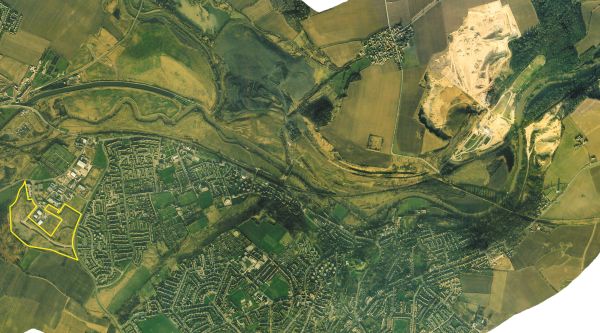 |
|
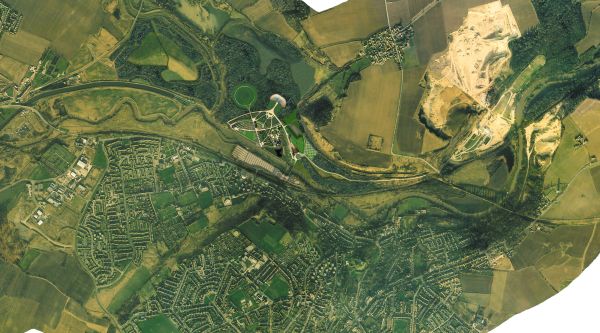 |
| We have learned about the making of Earth Centre |
|
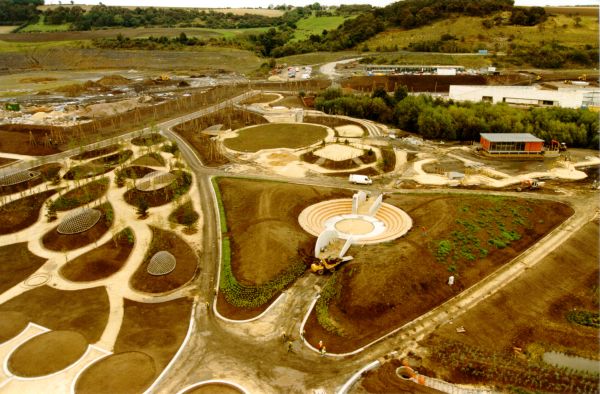 |
|
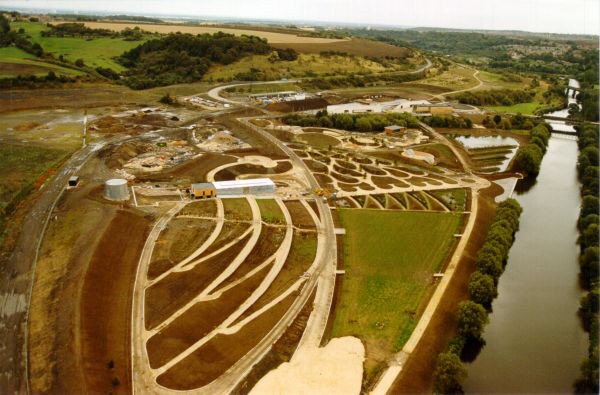 |
|
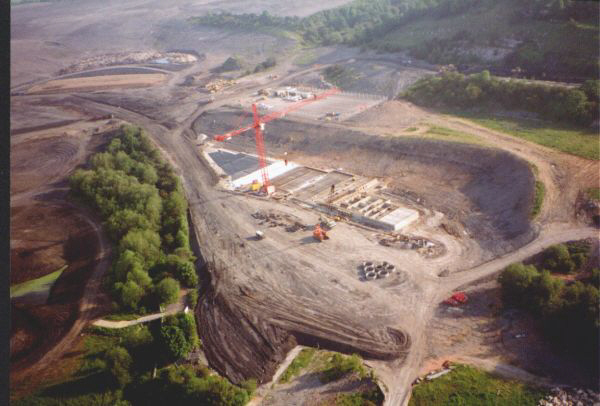 |
|
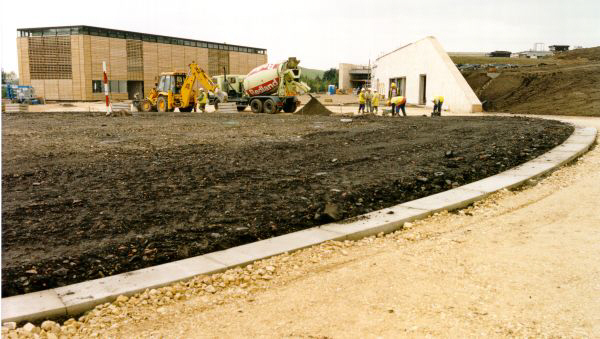 |
|
 |
|
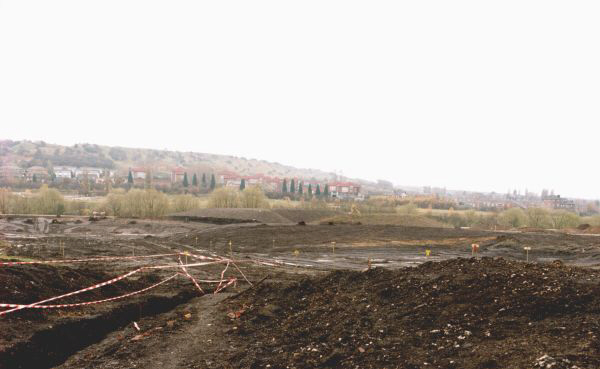 |
|
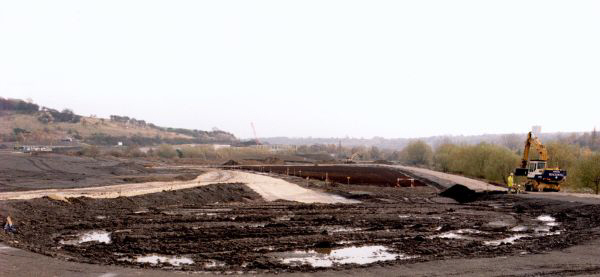 |
| We have been learning about how an area of Industrial wasteland is
transformed in to something attractive, |
|
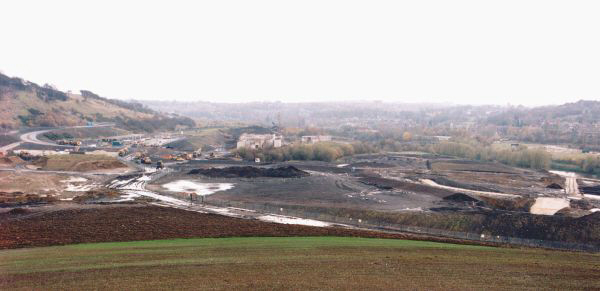 |
|
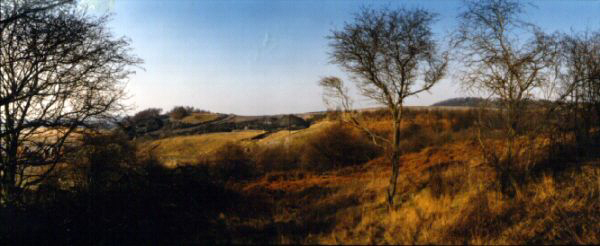 |
| We have been finding out about nasty places and nice places in our
local environment. |
|
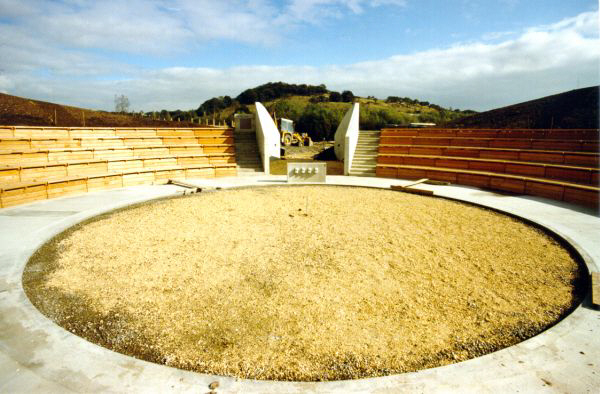 |
|
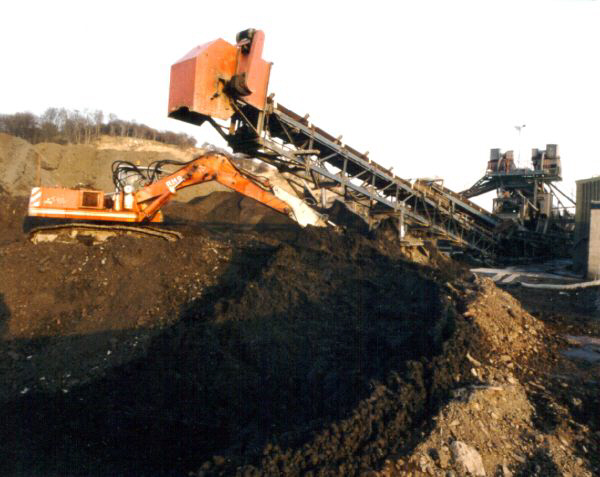 |
|
 |
|
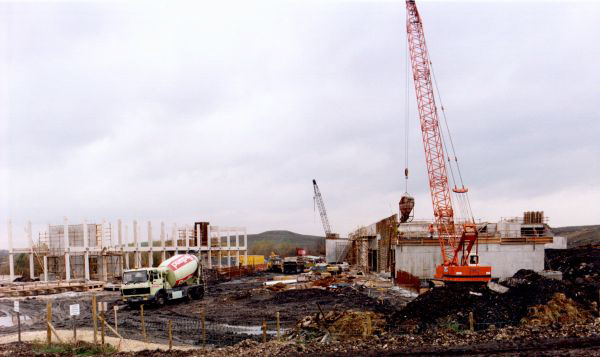 |
|
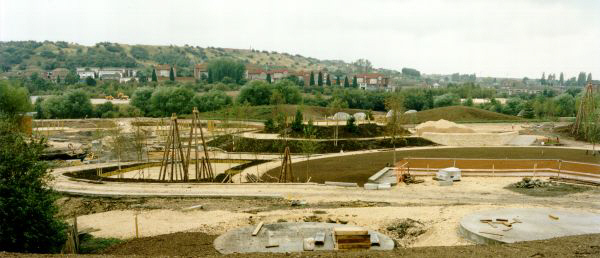 |
|
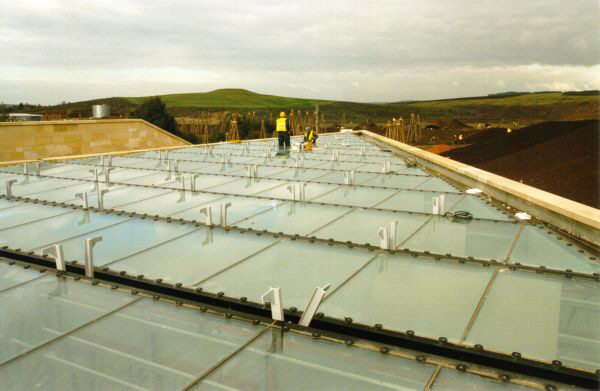 |
|
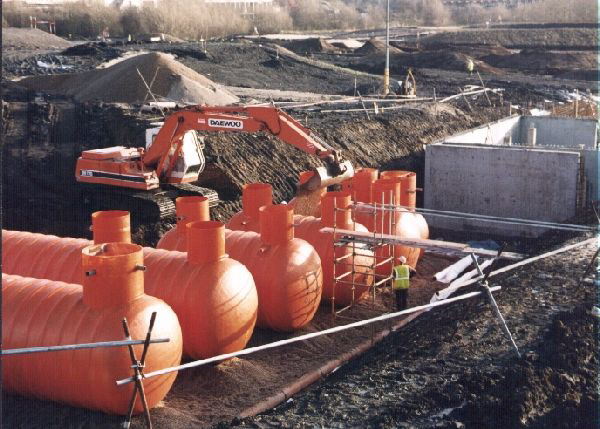 |
|
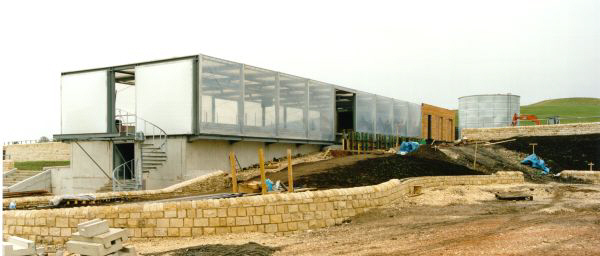 |
|
 |
|